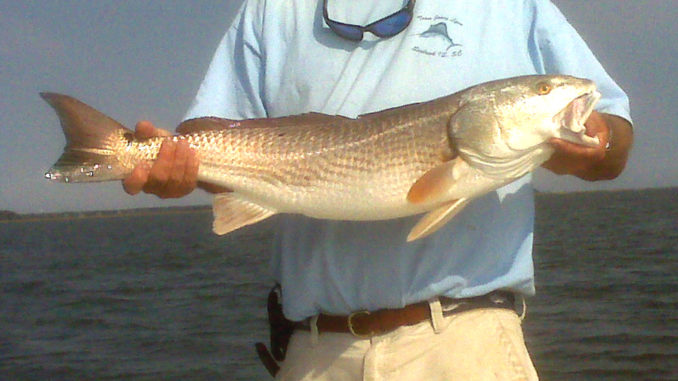
The Stono, Kiawah and Folly rivers offer all kinds of great fall fishing.
Rob Bennett grew up fishing the waters around Folly Beach, Kiawah Island and the Stono River, and he’s never found a reason to leave them.
Bennett, who lives on John’s Island and operates Lowcountry Inshore Charters, said it’s an excellent stretch of water that includes three rivers, plenty of marsh, oysters, bluff banks and laydown trees – a mixture of just about every kind of habitat fishermen along South Carolina’s coastline regularly encounter.
“You’ve got three major rivers (the Kiawah, Folly and Stono) going out through Stono Inlet, and you’ve got great tidal flow and a great flush. You’re so close to the ocean you get pristine water,” he said. “The three rivers provide a variety of structure and cover and you can fish flats, fish oysters or fish bluff banks.
“The fishing here is as good as anywhere on the coast.”
Bennett said the area’s two main public ramps, the Battery Island, aka Sol Legare Ramp, on Sol Legare Rd., and the Folly Beach ramp at the base of the SC 171 bridge, are convenient to most of the better fishing areas. Crabbing and oystering are local specialities, and there’s plenty of forage fish and crustaceans for predator fish like flounder, trout and redfish.
He calls the vast area of marsh behind Kiawah Island, “Bulls Bay with houses around it,” and believes that although development has stripped some of the area’s character, it’s also created a lot of great fishing around docks.
Several docks or sets of docks are among some of his favorite places to fish in the fall:
1 Old Concrete Dock, Folly River
The remnants of an old concrete structure break up a series of newer docks along the left-hand bank of the Folly River, a hundred yards or so upstream from Folly Marina. Bennett said it’s a sheepshead hangout, but he also catches an occasional redfish around it.
He likes to fish fiddler crabs or shrimp on a split-shot ring around the pilings, the last half of the falling tide and first half of the rising tide.
“It’s a really good sheepshead spot in spring, summer and fall,” Bennett said.
2 Marker 16 Hole
Several hundred yards up the same bank, past the marina and in front of channel marker No. 16, is a bank that is a perfect example of what fishermen refer to as an “edge.”
According to Bennett, fish coming from Stono Inlet head down a bank that’s nothing but sand, sand, sand, sand – and all of the sudden, there’s marsh grass and a oyster shells.
“They come running up the bank, and when they hit the shells, they put on the breaks,” he said.
A shipwreck on the bank and a drain creek marks the end of the sandy bank; the shells run from the upstream side of the drain creek several hundred yards, and Bennett said the entire bank can be productive.
“I’ve been fishing here since I was a kid, and I’ve caught trout, redfish and flounder on this spot,” he said. “It’s a great spot from July through November. It’s not really the little creek that’s important; it’s the shells in front of the bank.”
Bennett fishes live shrimp or live mullet minnows on a popping cork of a split-shot rig.
Editor’s note: This article is part of the Saltwater Series in the September issue of South Carolina Sportsman. Digital editions can be downloaded right to your computer or smartphone.
Be sure to subscribe to ensure you don’t miss a single information-packed issue of South Carolina Sportsman.




Be the first to comment